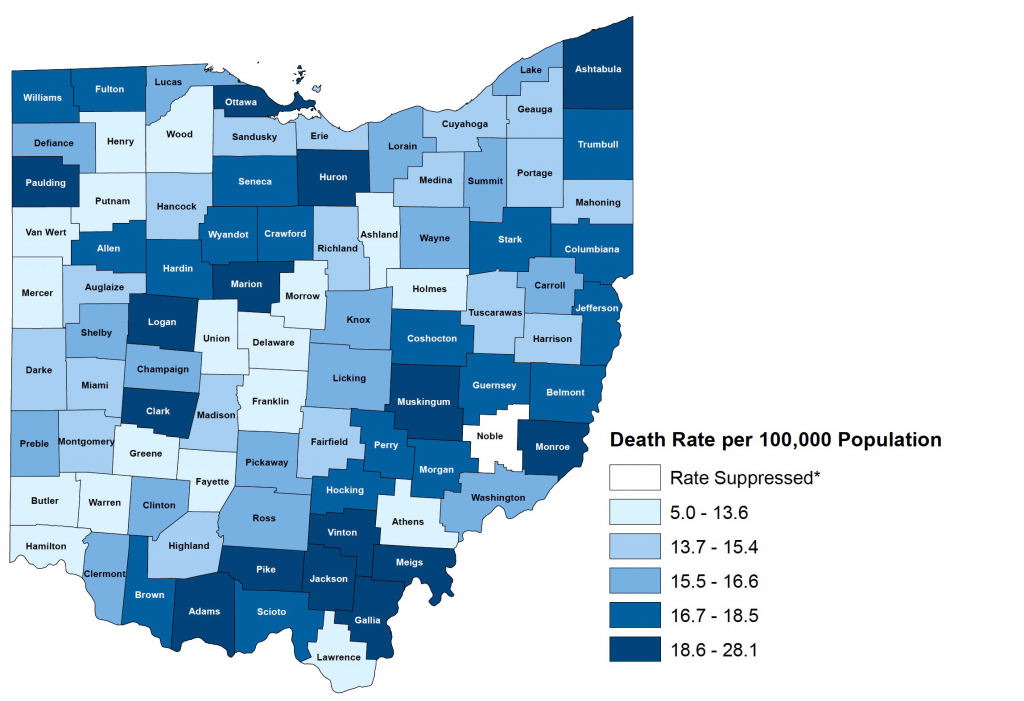A new report shows suicide rates in southeast Ohio are among the highest in the state
By: Caleb McCleskey
Posted on:
ATHENS, Ohio (WOUB) – Suicide rates in southeast Ohio were among the highest in the state for 2021, according to a recent report from the Ohio Department of Health.
Mental health experts in the region say the high suicide numbers are a combination of cultural influences and financial issues in those communities.
Local mental health boards and other organizations are trying to address the problem by reaching out to communities in a way that will better communicate how serious the issue is in southeast Ohio and encourage people to reach out for help.
The report from the Ohio Department of Health displays a color-coded map of the counties in Ohio using different shades of blue. The darker the shade of blue, the higher the suicide rate for that county. A cluster of six counties in southeast Ohio are all the darkest shades of blue.

Mental health organizations and other suicide prevention boards in southeast Ohio offered some explanations for why their numbers are higher than other regions in the state.
The social determinants of health for residents in southeast Ohio could have raised those numbers, said Deputy Director Svea Maxwell and Community Services Coordinator Kim Crum of the Athens-Hocking-Vinton Alcohol, Drug Addiction and Mental Health Services Board.
“When we are talking about Appalachia Ohio we are talking about something a little more different than northern Ohio,” Crum said. “We have cultural barriers, we have physical barriers thinking about transportation. We have poverty barriers. We have generational trauma barriers. I think that this is a unique area, but ultimately not a unique problem.”
Several factors that influence suicide numbers include gender, race, age and the county where a person lives. Shannon Dalton, community programming coordinator of the Gallia-Jackson-Meigs Alcohol, Drug Addiction and Mental Health Board, said there are other factors involved beyond a person’s identity that also influence the numbers.
For example, she said, at a recent conference she attended there was discussion about a correlation between substance use and suicide, as well as gambling and suicide.
Gambling wasn’t considered a major factor, she said, but it was introduced as a rising factor. Dalton said that because of the “wide breadth” of gambling throughout the state it could start to grow as a factor contributing to more suicide deaths in Ohio.
For Appalachian communities, Dalton said that culture also contributes to the rising numbers.
“We are definitely seeing the stigma of help seeking,” Dalton said. “The older men, they don’t want to talk about their feelings. It’s not something they’ve ever done, so it’s kind of built into that culture. … They like to solve their problems on their own.”
Different educational programs in southeast Ohio communities are trying to reduce this stigma, Dalton said. Local efforts from schools are trying to get men to open up more, especially about how they’re feeling and how they’re fighting with personal issues.
But not all efforts dealing with suicide are successful in reaching community members, especially suicide prevention efforts from the state.
The culture of southeast and Appalachia Ohio is different from other regions, Dalton said, so it’s important to tailor the message to the specific population. “It’s not going to be received the same way, so the culture has to be able to see themselves in that messaging as well.”
Counties in southeast Ohio also lack the necessary resources to receive these messages, said Tony Coder, executive director of the Ohio Suicide Prevention Foundation. It is difficult for the organization to get its messages into some communities because of the lack of internet access and issues with access to care.
Communities and state suicide organizations must be willing to work with another and collaborate, Coder said. “I think we have to listen and then be able to work with that community to help adapt the programs that we do have to fit their needs.” Once this adaptation happens, Coder believes this will start to decrease the suicide numbers across the state.
“They can come up with a campaign even on a local level, and that is the power that coalitions have to be able to communicate to their community in a way that their community will respond,” Dalton said. “By promoting those local community efforts and bringing in all of our partners within the communities at the table, that’s how we’re able to spread that information to make that impact on our communities.”

